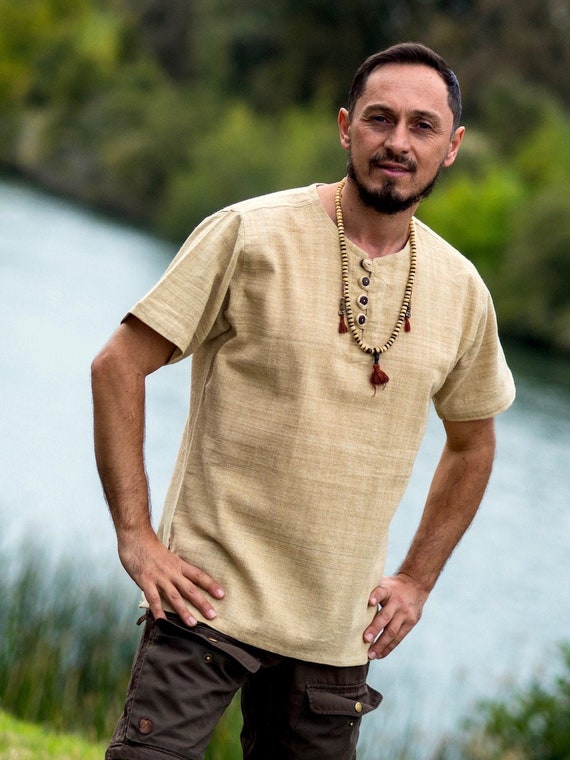Good Suggestions For Selecting Hemp Clothing
Wiki Article
What Are The Main Differences Between Hemp And Cotton With Regard To Water Consumption, Pesticides And Herbicides, Etc.?
There are many reasons hemp is considered a sustainable plant if you compare it to cotton when it comes to water use in terms of insecticides, herbicides, and water usage.
Hemp- Hemp is known for its relatively low water requirements in comparison to other crops, like cotton. It's a drought-resistant plant that can be grown without water. Hemp is usually grown with rainwater in many areas. It's a great water-efficient plant.
Cotton- Conventional textiles are known for their water-intensive nature. Cotton farming typically requires a lot of irrigation which could reduce local water resources and lead to water scarcity in water-stressed regions. The high demand for water in the cultivation of cotton has raised questions regarding its sustainable nature.
Herbicides, Pesticides
Hemp- Hemp is naturally resistant to many pests and diseases, which reduces the need for synthetic herbicides and pesticides. Although some hemp plants may require limited pest management measures but the general use of chemical inputs is much lower than many other crops, including cotton. You can grow organic hemp without pesticides.
Cotton- Conventional conventional cotton farming heavily relies on pesticides that are synthetic. Herbicides can also be used to manage the growth of weeds. These chemicals can cause negative environmental impacts including water and soil pollution and harm to species that are not targeted and the development pesticide-resistant insects.
Summary Hemp is a sustainable crop when it comes the use of water, pesticides, and herbicides.
Hemp needs less water to grow, and is usually grown using water from rain, with no irrigation, or without water at all.
Hemp is resistant to many pests, diseases and fungi. This helps reduce the use of pesticides made from synthetic chemicals.
Hemp cultivation generally involves fewer synthetic pesticides and herbicides in comparison to conventional cotton.
It's important to remember that environmentally sustainable and sustainable methods vary among farmers. Organic farming practices also enhance sustainability by decreasing the usage of synthetic chemicals and increasing the quality of soil. In assessing the environmental impact of textiles and clothing making sure to use organic and sustainable fibers, such as cotton or hemp, will help reduce the ecological footprint of the fashion industry. Take a look at the top rated click this for hemp clothes for website examples including hemp clothing womens, hemp button down shirt, patagonia hemp island pants, hemp apparel fabric, hemp underwear, hemp athletic wear, hemp tank top, hemp cotton fabric, patagonia hemp vest, patagonia iron forge jacket and more.

What Is The Hemp-Based Clothing's Performance With Other Fibres In Terms Of Quality And Function?
Hemp clothing comes with a number of practical and technical advantages over other fabrics, as well as being eco-friendly. Here are a few ways in which hemp clothing stands out as a high-performance and eco-friendly choice in terms of moisture wicking and breathability-
Hemp fibers are highly absorbent and wick away moisture. It makes hemp clothes comfortable to wear in a range of weather conditions. They can help wick away water, which keeps the wearer cool and dry in hot weather.
Temperature Regulation
Hemp clothing is very thermoregulatory and breathable. It can keep your body warm by storing warmth close to you and it can aid in keeping cool during hot temperatures. This natural regulation of temperature can lessen the need to change clothing frequently.
Durability and long-term durability-
Hemp fibers can be durable. Hemp clothing is known to be more durable and resistant to wear and more durable than other fibers. Hemp clothing is robust, which means they will last longer and lessen the requirement for replacements and therefore, their environmental impact.
UV Protection-
Hemp fibers are a natural source of UV protection, shielding the skin from damaging UV radiation. This feature is especially beneficial when you are outdoors.
Biodegradability:
Hemp clothes degrade naturally over time. The environmental impact of textiles is reduced by this feature, in contrast synthetic fibers that can be buried for an extended period.
Low Environmental Impact
Hemp cultivation usually requires less synthetic herbicides and pesticides as than conventional cotton. Hemp also uses less water making it an environmentally friendly alternative. The ecological benefits of hemp grown organically are even more pronounced.
Carbon Sequestration
Hemp plants can absorb carbon dioxide during their growth. The hemp plant can act as a carbon sink, and also reduce greenhouse gases.
Sustainable agriculture and crop rotation-
Hemp is easily integrated into crop-rotation systems to improve overall soil health. It also decreases the possibility of soil depletion or disease accumulation. This sustainable farming method can help reduce environmental impacts.
Versatility:
Blending hemp fibers with other materials such as organic cotton or recycled polyester can create eco-friendly, high-performance fabric blends. This flexibility allows for the development of novel textile products.
Low Toxicity-
Hemp fibers are low toxicity level and do not require any chemical processing in order to manufacture. This minimizes the effect of textile production on the environmental.
While hemp provides many environmentally friendly and functional benefits, the sustainability of clothing is also affected by factors such as the process of dyeing and transportation. Also, it is affected by ethical working practices. For consumers to make sustainable choices they should look for clothing brands which prioritize sustainable manufacturing, transparency, and ethical business practices. Check out the top rated read more on hemp clothing for more tips including hemp t shirt mens, 100 hemp shirt, organic hemp underwear, hemp shirts, hemp sportswear, hemp fabric by the yard, patagonia island hemp pants, patagonia volley shorts, american made hemp clothing, hemp yoga pants and more.

What are the major differences between bamboo and hemp fibers?
The two fibers from plants, hemp as well as Bamboo are utilized in the production of textiles Each has its distinct characteristics and properties. Here are the key distinctions between bamboo and hemp fibers- 1. Plant Source-
Hemp- Hemp fibers are taken from the hemp stalks plant, and specifically the bast fibers that are in the outer layer. Hemp is adaptable, quick-growing and was used to create various products for centuries.
Bamboo fibers are produced from bamboo pulp. Bamboo is a quick-growing grass that is known for its durability and rapid renewal.
2. Fiber Specifications-
Hemp Fibers- Hemp fibers have a reputation for strength and durability. Hemp fibers are among the most durable natural fibers that soften with each wash, making them suitable for textiles that last a long time.
Bamboo- Bamboo fibres are silky soft with a smooth, silky texture. The fibers are less strong than hemp, and are more delicate. However they are extremely sought-after for their comfort when placed against the skin.
3. Texture, Feel and Look-
Hemp Fabric- Hemp is a material with a texture, and a rougher feel in its initial state. It can be comfy however it has a different texture compared to bamboo.
Bamboo- Bamboo fabric is smooth, silky and luxuriously soft. It's often described as a blend of cotton and silk, which makes it extremely comfortable to wear.
4. The ability to breathe and the moisture-wicking properties-
Hemp- Hemp fabrics are naturally wicking away moisture. This helps with better air circulation, and they also absorb water. They are a great way to keep cool in hot weather.
Bamboo fibers are also able to absorb moisture and are highly breathable. They also have micro-gaps which increase their ability to regulate moisture and temperature, which keeps you comfortably in any weather.
5. Environmental Impact-
Hemp Hemp is an environmentally friendly fiber due to of its high growth rate, low requirements for water, and its resistance to pests. These elements make it less necessary to use pesticides or herbicides. It is also able to capture carbon in its growing process.
Bamboo is a popular choice for environmentally friendly building materials. It grows quickly, requires very little water and is able to be grown without pesticides or herbicides. Certain varieties of bamboo, such as Moso bamboo are extremely eco-friendly.
6. Processing-
Hemp- Hemp fibers must be processed extensively to separate the bast fibers from the core. Processing can involve retting (decortication) or mechanical separation, or Retting.
Bamboo- Bamboo fibers are typically obtained through a chemical process known as the rayon or viscose process. This is the process of breaking down bamboo pulp by using chemical. This process can create environmental concerns when not managed in a responsible manner, certain bamboo textiles make use of closed-loop systems to decrease the waste of chemicals.
7. Versatility-
Hemp- Hemp fibers are flexible and can be can be used in a range of uses, such as clothes, textiles, paper building materials, and many more.
Bamboo fibers are used in many products, including towels and bedding.
Both bamboo and hemp have distinct characteristics and provide sustainability benefits. The choice of which one to choose is contingent on the specific qualities and characteristics you want in a textile item and your preferences for the environment. See the top rated bamboo clothing for website advice including bamboo yoga leggings, bamboo baby clothes, bamboo shirt, childrens bamboo socks, checkered bamboo pajamas, boody ecowear, bamboo apparel wholesale, clothes made from bamboo, bamboo brand jeans, bamboo pajama pants and more.
